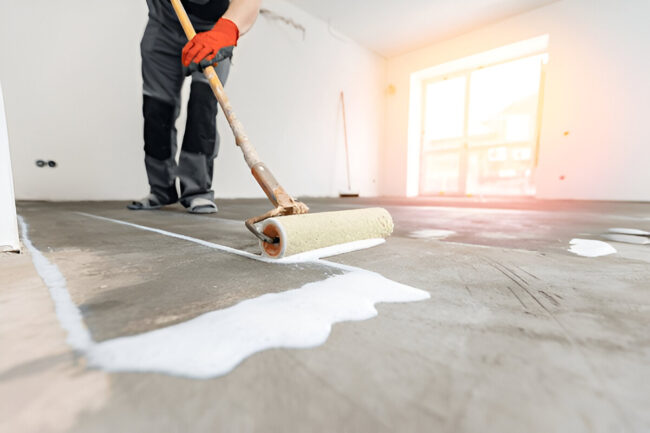
When you notice cracks, chips, or other damage in your concrete floor, it’s crucial to address the issue quickly to prevent further deterioration and maintain your property’s value. But what types of concrete floor repair products are available?
The main types of concrete floor repair products include epoxy fillers, polymer-modified cement patching compounds, concrete crack sealers, resurfacing overlays, and self-leveling compounds.
While these are the basic categories of repair products, choosing the right one depends heavily on factors like the type of damage, the repair’s location, and the floor’s intended use. Understanding each product type’s specific characteristics and applications will help you make the best choice for your particular situation and avoid costly mistakes from using the wrong product.
How To Choose The Right Concrete Floor Repair Product
The key to selecting the appropriate repair product is properly assessing your situation. For surface-level cosmetic repairs like small cracks and chips, epoxy fillers or polymer-modified cement compounds from your concrete floor supply work well. These products are easy to apply and provide excellent adhesion for damages less than 1/4 inch deep.
For deeper structural cracks or extensive surface damage, resurfacing overlays or self-leveling compounds are more appropriate. These products can cover larger areas and provide a completely renewed surface. When dealing with active cracks that may continue to move, flexible sealers are the best choice as they can accommodate future movement without failing.
When Should You Use Each Type Of Concrete Repair Product?
Epoxy fillers are ideal for filling narrow cracks and small holes, particularly in high-traffic areas due to their exceptional durability and chemical resistance. Polymer-modified cement patches work best for larger surface repairs and can be feathered to blend with surrounding concrete.
Self-leveling compounds are perfect for uneven floors or to create a smooth, level surface over damaged concrete. These products can typically be applied in layers from feather-edge to several inches thick. Resurfacing overlays are the go-to choice when you want to completely renovate the appearance of a concrete floor while addressing minor surface imperfections.
What Preparation Is Required For Concrete Floor Repairs?
Proper surface preparation is crucial for any concrete repair product to work effectively. The repair area must thoroughly clean all dirt, oil, and loose debris. This typically involves wire brushing, pressure washing, or grinding the surface.
For deep repairs, the edges of the damaged area should be cut to create a clean, straight edge slightly deeper than the surrounding concrete. This helps the repair product bond better and creates a more durable fix. Most manufacturers recommend slightly dampening the repair area before applying their products, though some epoxy-based products require a completely dry surface.
What Environmental Factors Affect Concrete Floor Repairs?
Temperature and humidity are crucial in how well concrete repair products cure and perform. Most products require application temperatures between 50-90°F (10-32°C) for optimal results. Working in conditions outside this range can lead to improper curing, reduced strength, or complete repair failure.
Moisture levels in the air and the concrete substrate can also impact repairs. High humidity can slow down curing times for some products, while excess moisture in the concrete can prevent proper bonding, especially with epoxy-based products. It’s important to check weather forecasts and use moisture meters to ensure suitable conditions when planning repairs.
How Long Do Concrete Floor Repairs Last?
The longevity of concrete floor repairs varies significantly based on the product used and the conditions it’s exposed to. High-quality epoxy repairs in indoor settings can last 15-20 years, while exterior repairs may need replacement after 5-10 years due to weather exposure and temperature fluctuations.
Proper installation is crucial for longevity. Even the highest quality repair products can fail prematurely if not applied correctly or if the underlying cause of the damage isn’t addressed. For example, if a crack is caused by settlement issues or poor drainage, simply filling the crack without addressing these problems will likely result in the repair failing within a few years or even months.
Regular maintenance, such as cleaning and sealing, can significantly extend the life of concrete repairs. Additionally, addressing repairs promptly when new damage appears helps prevent more extensive deterioration that could compromise the integrity of previous repairs.
Taking The First Step With Your Concrete Repair
Before purchasing any concrete repair products, take the time to thoroughly assess and document your floor damage, including measuring crack widths, depths, and overall affected areas. This detailed evaluation will not only help you select the right product. Still, it will also ensure you purchase the correct quantity and have all the necessary tools for proper application when you begin the repair process.
